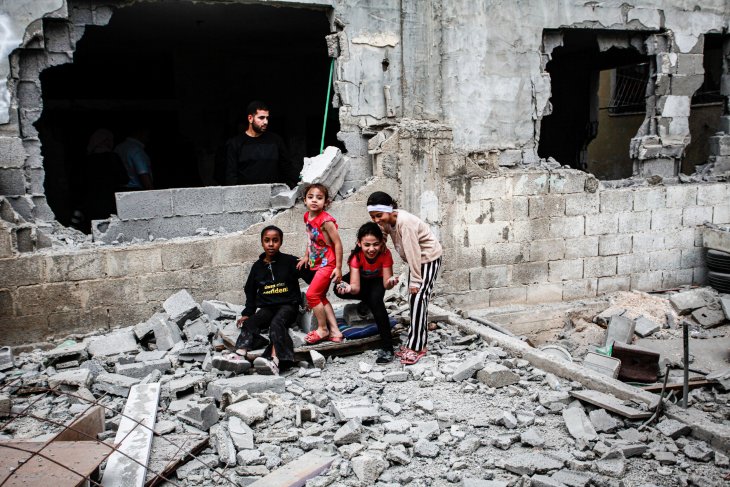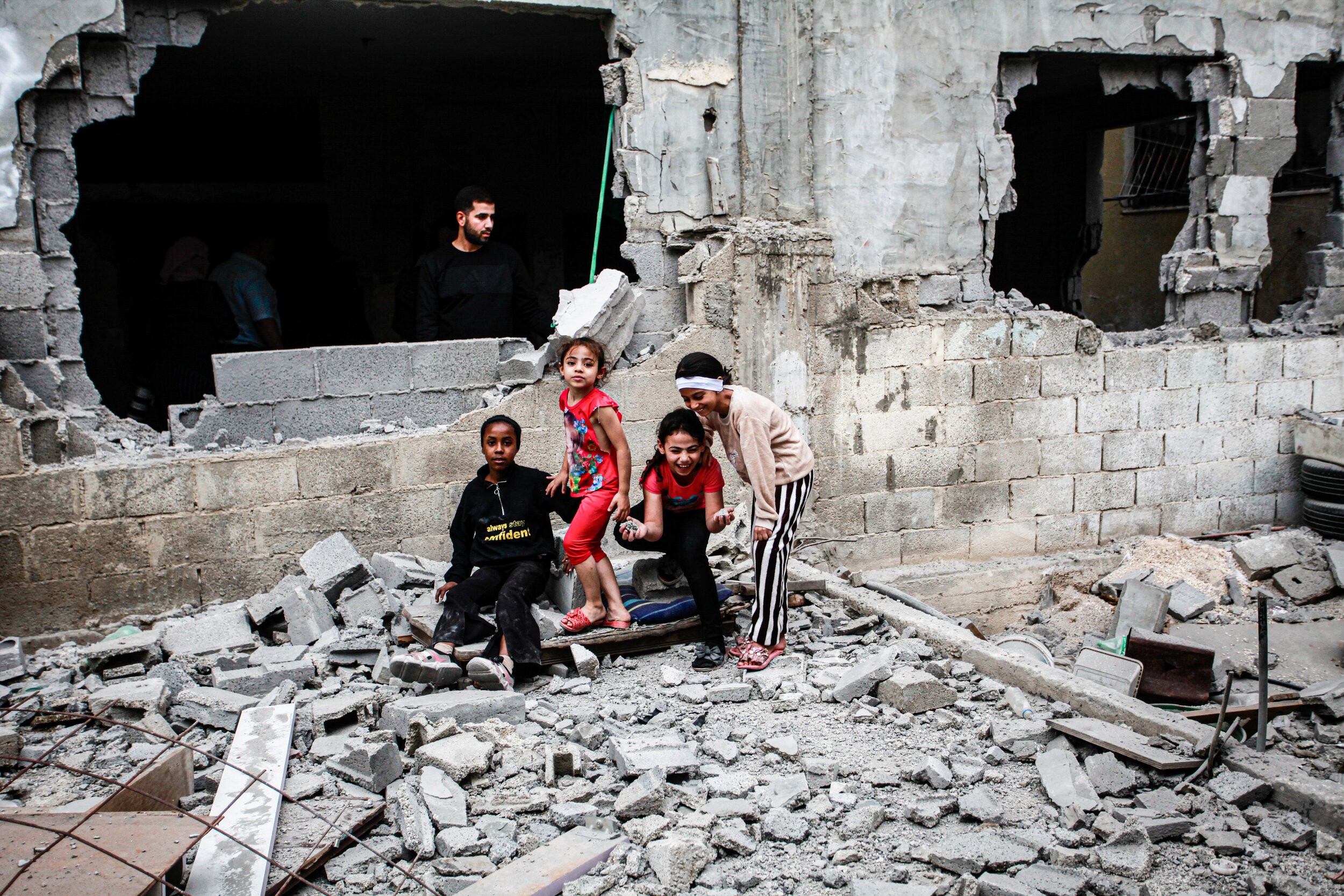News reporting from around the world constantly and painfully reminds us about the heavy toll paid by children in current conflicts, such as in Ethiopia, Ukraine, and Gaza.

Palestinian children are playing inside a destroyed house following an attack by Israeli forces in the Askar refugee camp, West Bank. Photo: Nasser Ishtayeh / SOPA Images / LightRocket via Getty Images
In addition to being directly exposed to grave violations such as killing and maiming, recruitment by armed groups, sexual violence, abduction, attacks on schools and hospitals, and denial of humanitarian access, children also suffer more indirectly from the consequences of war. Children living in conflict-affected areas are more likely to drop out of school, lack access to clean water, and suffer from mortality risks due to illnesses and malnutrition, or lack of vaccines and medical care.
Today Save the Children launches its new report Stop the War on Children: Let Children Live in Peace.
The report is based on PRIO’s seventh annual mapping of children in armed conflict covering the period 1990–2022. Our latest estimates, covering the year of 2022, suggest that 468 million children, or more than 1 out of 6 of the world’s children were living in a conflict zone.
How can we measure children affected by conflict?
Most conflicts take place in limited geographical areas within countries. In order to provide estimates for the number of children living in conflict zones, we need to isolate these areas. The UCDP Georeferenced Events Dataset (UCDP GED) provides detailed information on the location of each separate conflict event or incidence of organized violence in conflicts around the world, including geographical coordinates. We draw circles with 50 km radius around each of these conflict events and estimate the number of children that live in these areas using population data from CIESIN and the UN. In other words, we define children affected by conflict as any child who lives less than 50 km away from one or more such conflict events. The rationale for this is that 50 km is arguably a reasonable distance within which conflict events could be expected to impact children’s daily lives.
Key numbers
- In 2022, app. 1.7 billion children (more than 2 in 3) were living in a conflict-affected country and app. 468 million children (more than 1 in 6) were living in a conflict zone – i.e. 50km or less away from one or more conflict events.
- The estimated 468 million children living in a conflict zone in 2022 constitute a 2.8% increase from 2021. Over time, despite some fluctuations, there has been a general, steady increase in the number of children living in conflict zones.
- In 2021, Africa was the world region with the highest estimated total number of children living in conflict zones (183 million children), followed by Asia (145 million).
- The Middle East continued to have the highest share of children living in conflict zones (39% of all children in the region).
What can be done to protect children in conflict?
There is an urgent need to protect the millions of children who are living in close proximity to violent conflict. Concrete measures that should be taken include the following:
- Support high-quality peacekeeping operations in conflict-affected areas.
- Address children’s needs in peace negotiations as early as possible in peace processes.
- Create safe spaces for children in affected areas.
- Design and uphold credible sanctions against armed groups during conflicts to reduce all grave violations against children.
- Increase aid to conflict-affected countries in order to rebuild infrastructure, education, and health systems that benefit children.
For more information, read Save the Children’s full 2023 report, Stop the War on Children: Let Children Live in Peace. Available at this link.
For a policy brief describing our update of the annual mapping of children affected by armed conflict, read our PRIO Conflict Trends Policy Brief 8/2023: ‘Children Affected by Armed Conflict, 1990–2022’.
#Children #Risk #Conflict #PRIO #Blogs






